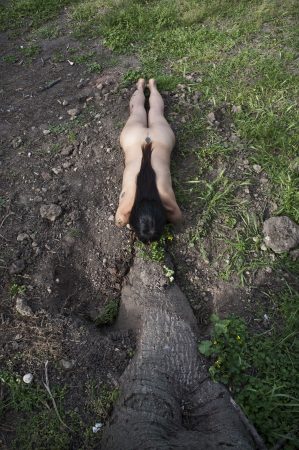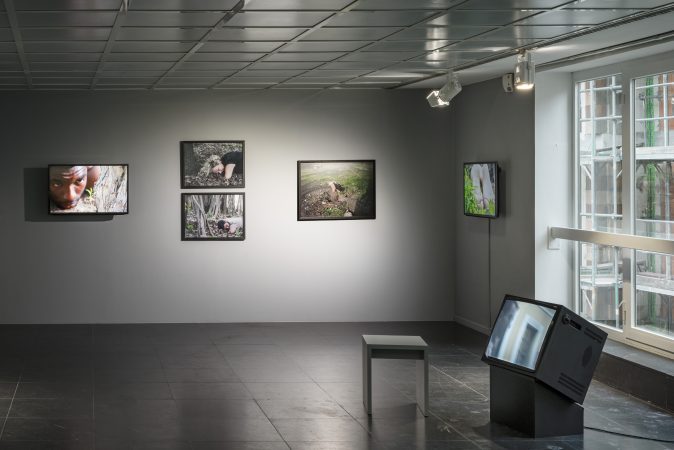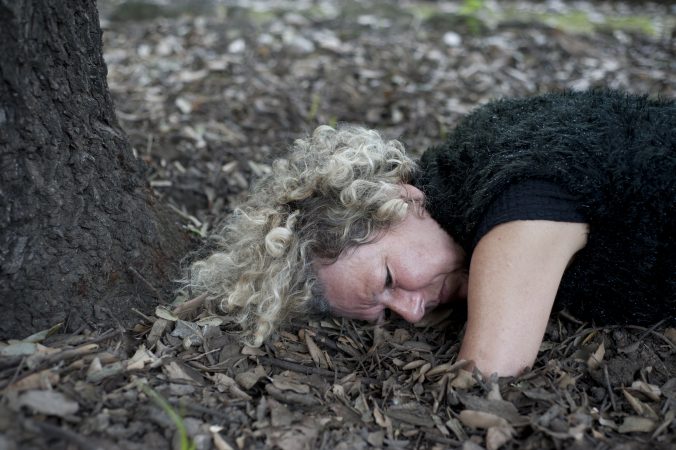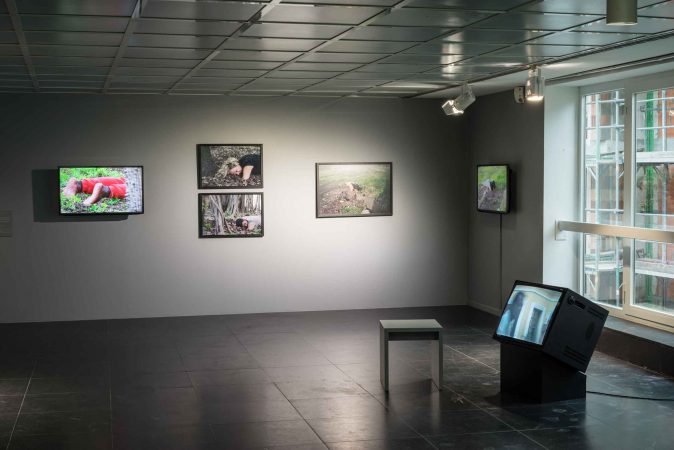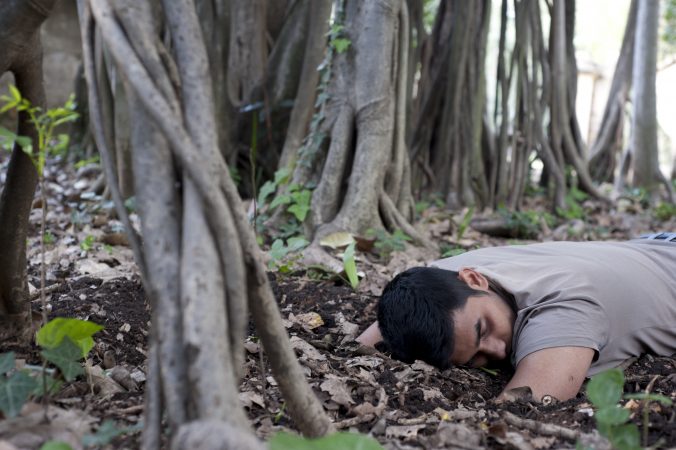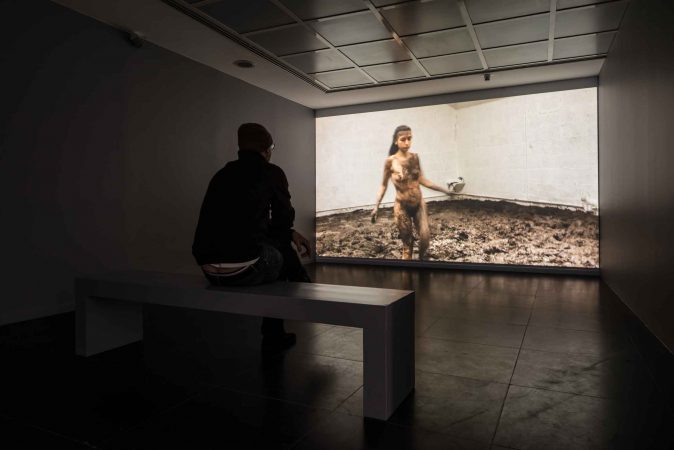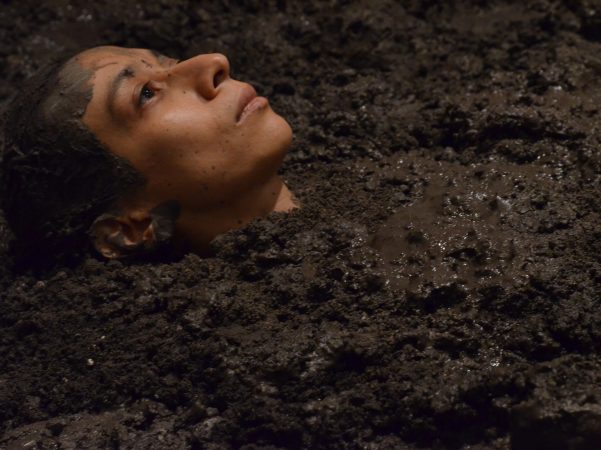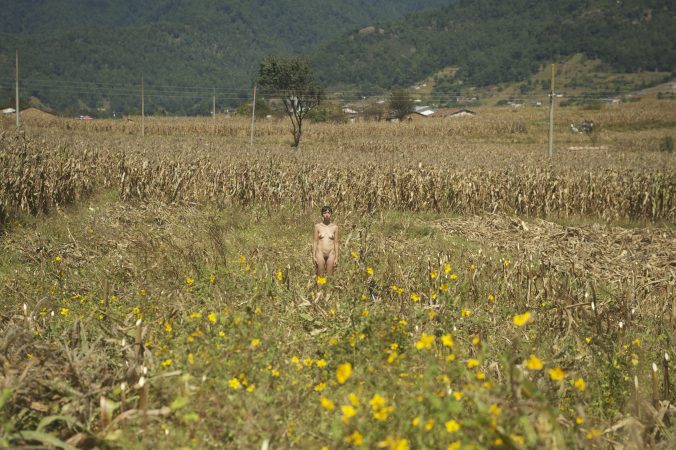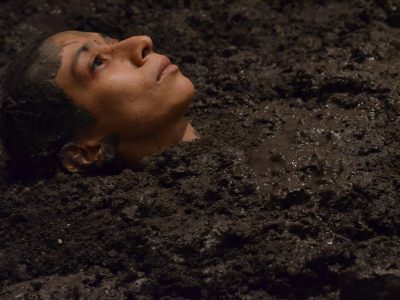Mechanisms of Power – Regina José Galindo
Third floor
America’s Family Prison, 2008
Video, 54:49 min
ArtPace, San Antonio, Texas, USA
“What is fascinating about prisons is that, for once, power doesn’t hide or mask itself; it reveals itself as tyranny pursued down to the smallest details.” – Michel Foucault
Rento una celda utilizada en exhibiciones dentro de la industria de prisiones privadas en los Estados Unidos. Tomando como modelo las celdas familiares de T Don Hutto la adecúo y la habito junto con mi bebe y mi esposo durante 24 horas. Al salir la puerta queda abierta y la celda es mostrada como objeto de arte.
I rent a family‐sized cell from a company that offers all types of products and services to the private‐prisons industry in the United States. Taking T. Don Hutto’s family cells as my model, I adapt it and live in it with my daughter and my husband for 24 hours. After we came out, the door remains open and the cell is presented as a work of art.
Nadie atraviesa la región sin ensuciarse / Nobody crosses this area without getting dirty, 2015
Video, 4:41 min
Art Center South Florida, Miami, USA
No hablemos desde la superficie
entonces
-la palabra-
tendrá peso.
Transformación del espacio expositivo en un pantano. Me mantengo dentro del lodo solamente con la cabeza afuera para respirar. El público para acceder a mí debe empantanarse, enlodarse.
Do not talk from the surface
so
– the word –
will get its own weight.
The exhibition space is transformed into a swamp. I am submerged in mud and only my head sticks out in order to breathe. The public, in order to be able to reach me, should bog down, get muddy.
Raíces / Roots, 2015
Photographies, Video, 5:43 min
Palermo, Italia
RAICES un grupo de inmigrantes de 20 nacionalidades diferentes, se aferran a las raíces de los árboles y plantas que se corresponden con el origen de cada uno de ellos.
RAICES (ROOTS), a group of migrants of 20 different nationalities cling to the roots of trees and plants that correspond to the country origin of each of them.
Raíz / Root, 2015
Photography, Video, 5:57 min
Palermo, Italia
Courtesy the artist and prometeo gallery di Ida Pisani Milan / Lucca
RAIZ me aferro a las raíces de una ceiba y permanezco allí como punto de fuga a los otros 20 migrantes.
RAIZ (ROOT), cling to the roots of a ceiba and remain naked as vanishing point for the 20 other migrants.
Mazorca / Corncob, 2014
Videos 30 min and 8:29 min
Aldea Chotacaj, Totonicapán, Guatemala
“Destruyeron nuestras casas, robaron nuestros bienes, quemaron nuestra ropa, llevaron a los animales, chapearon la milpa, nos persiguieron de día y de noche”. Caso 5339 (declarante hombre achí) Plan Sánchez, Baja Verapaz, 1982. Tomo 1. Capítulo Tercero. Remhi
Durante la guerra en Guatemala, como parte de la estrategia militar de tierra arrasada, el maíz fue cortado, fue quemado, fue destruido por el Ejército Nacional con la intención de destruir a comunidades indígenas, consideradas bases de la guerrilla. La paz fue firmada en el 96. El maíz resistió. Los pueblos resistieron. En el 2014 el Congreso de la República aprobó la Ley de Protección de Obtenciones Vegetales, popularmente conocida como Ley Monsanto, que ponía en riesgo el futuro del maíz y la autonomía alimentaria del país. Fueron los pueblos indígenas los que más se opusieron, logrando la derogación de la ley.
Me mantengo oculta dentro de un maizal. Cuatro hombres cortan con machete todo el maíz hasta descubrirme. Por unos minutos permanezco de pie sobre el maíz destruido.
“They destroyed our houses, they stole our goods, they burned our houses, they took away our animals, they chopped our corn fields, they chased us during the day and at night”. Case 5339 (Achí man’s statement) Plan Sánchez, Baja Verapaz, 1982. Volume 1. Chapter Three. Remhi.
During the war in Guatemala, as part of a military strategy called “scorched earth”, the corn was chopped, it was burned and destroyed by the army with the intention of leaving ravaged native communities considered guerrilla bases. Peace was signed in 1996. Corn resisted. The people resisted. In 2014 the Congress of the Republic of Guatemala approved the Plant Variety Protection Law, popularly known as the “Monsanto Law”. This law jeopardizes the future of the corn and food autonomy in Guatemala. Indigenous people were the most opposed and achieved a repeal of this law.
I keep hidden in a cornfield. Four men chopped with machetes all the corn to discover me. For a few minutes I remain standing on the destroyed corn.
Curso de supervivencia para hombres y mujeres que viajarán de manera ilegal a los Estados Unidos / Survival Course for women and men who are going to travel illegally to the USA, 2007
Video, 8:42 min
Ciudad de Guatemala, Guatemala
Organizo un curso intensivo de supervivencia para un grupo de 10 personas de ambos sexos que viajarían próximamente a los Estados Unidos de manera ilegal. En el curso aprendieron tópicos como resistencia, orientación y mapage, fuego, primeros auxilios, y un apartado de cómo aprender a escalar un muro.
I organize an intensive survival course for a group of 10 people, both male and female, who are about to embark upon an illegal journey to the United States. During this course, they learn forms of resistance and about orientation, safe travel, map reading, refugees, fire, survival kits, first aid, and how to climb a wall.


